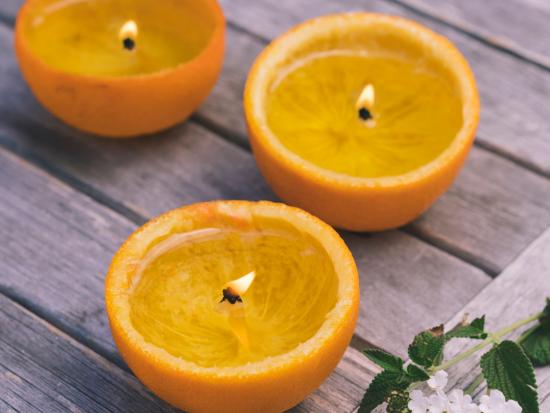Step-by-step tutorial
Step 1
Take your orange and slice it in half horizontally. Have an adult help or carefully supervise any cutting necessary for this project.

Step 2
Remove (and eat!) the middle portion of the orange while leaving the white stem intact. This step can get messy so we recommend doing it over the sink.
Carefully cut along the perimeter of the orange to loosen it up. Then use a spoon to scrape out the insides. Be very careful not to poke a hole through the peel.
Remove all of the fruit from the inside so that only white remains on the inside. The pith is now your natural wick!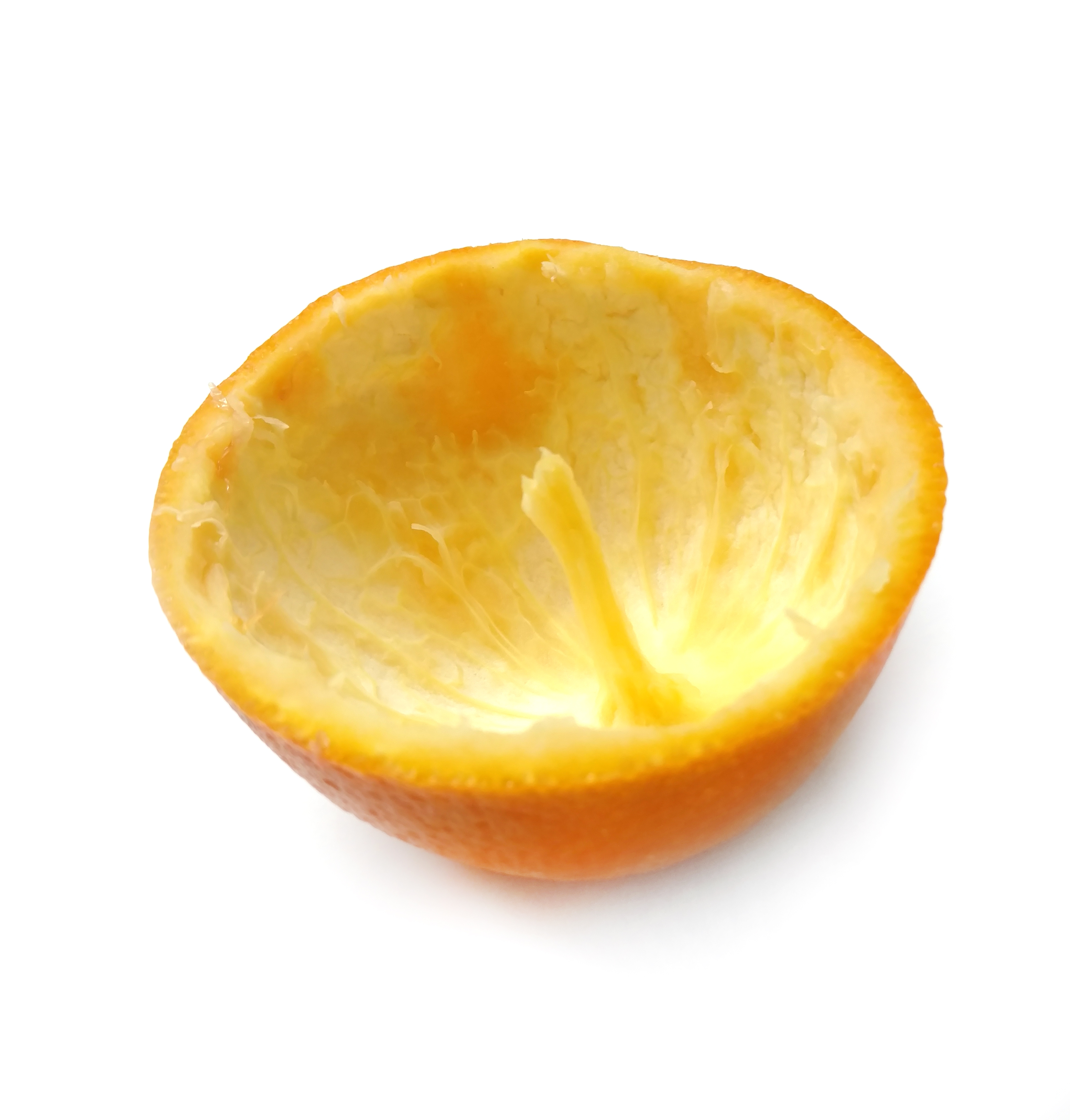
Step 3
Pat the inside with a paper towel. Then fill the orange with oil until just below the top of the white stem.
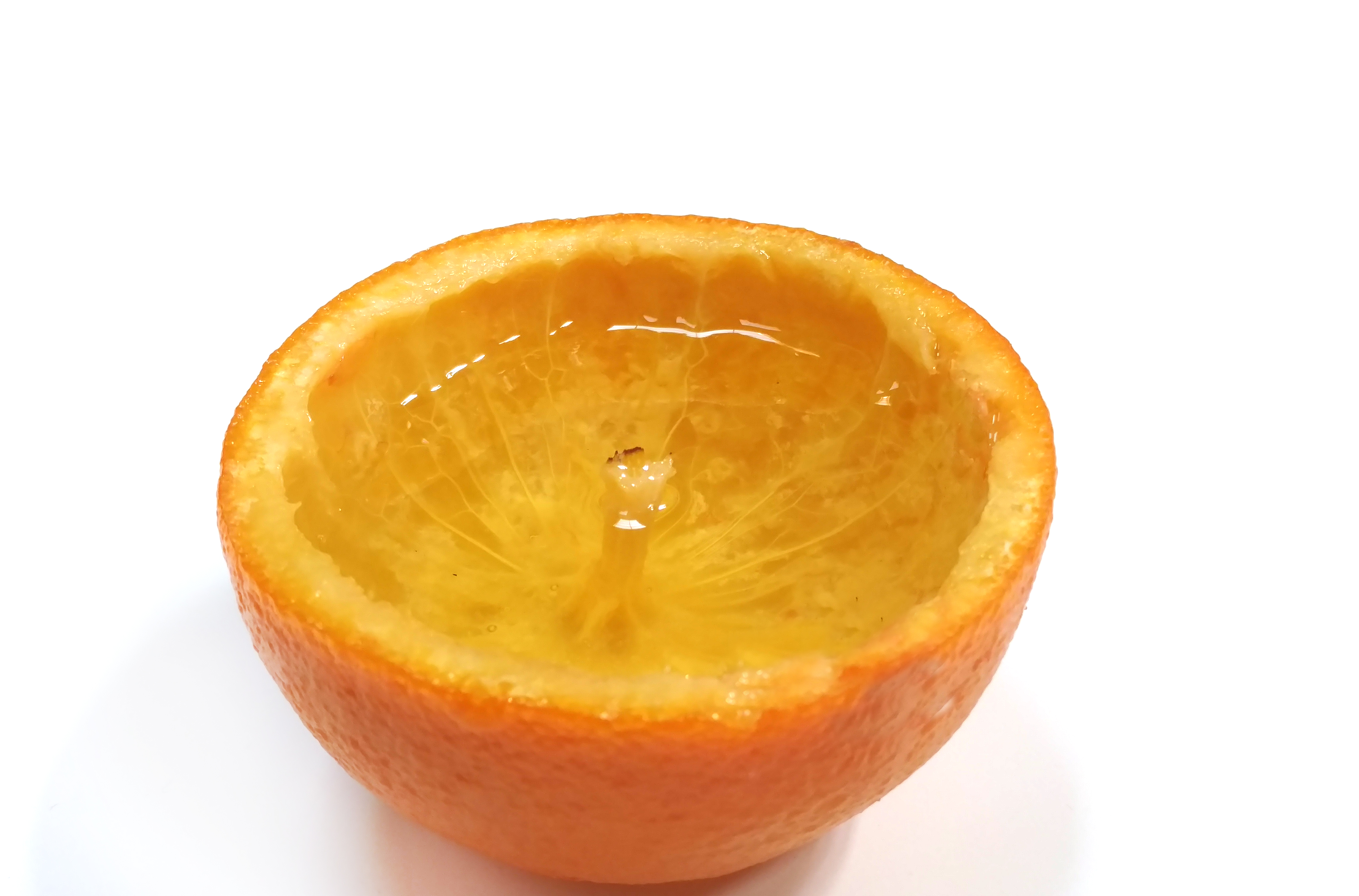
Step 4
Carefully light the stem with a lighter or match until it starts to burn. An adult should perform or carefully supervise this step, if needed. You now have a natural burning candle! The wick will continue to suck up the oil in the base of the orange and keep the fire going.
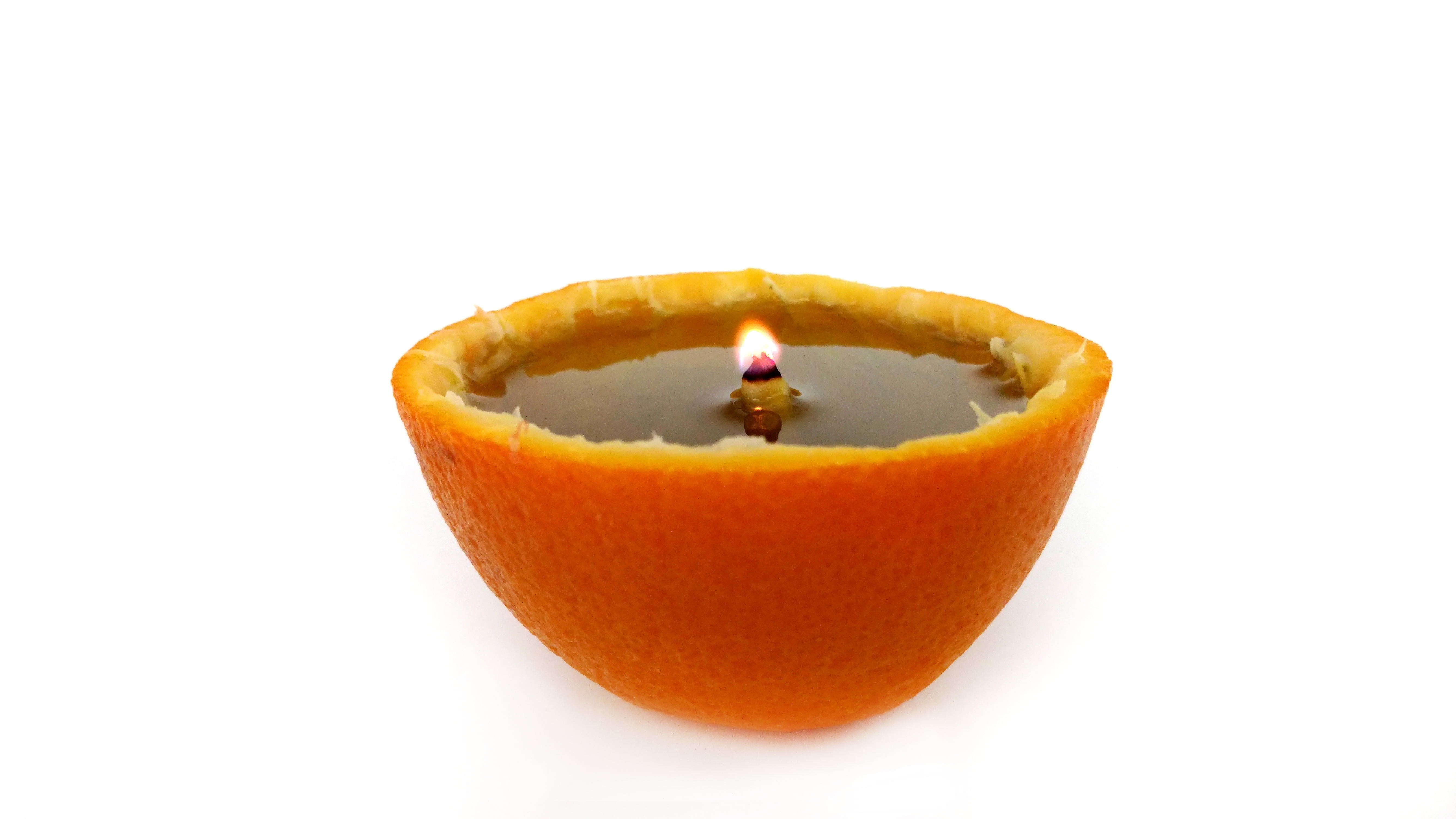
Tip
If you have trouble lighting the wick, it may be too wet. Try to dry the wick with a paper towel and then let the candle sit for a few minutes so that it can soak up the oil before lighting again.
Step 5
To make it a bit more unique, you can hollow out the top half of the orange and place it over the base to create a soft orange glow. Just remember to cut out enough holes so the fire can breathe. You can continue to experiment with different oils and citrus fruits. Do some citrus fruits last longer than others? What oil seems to burn better? Enjoy lighting up your evenings with these beautiful natural candles!
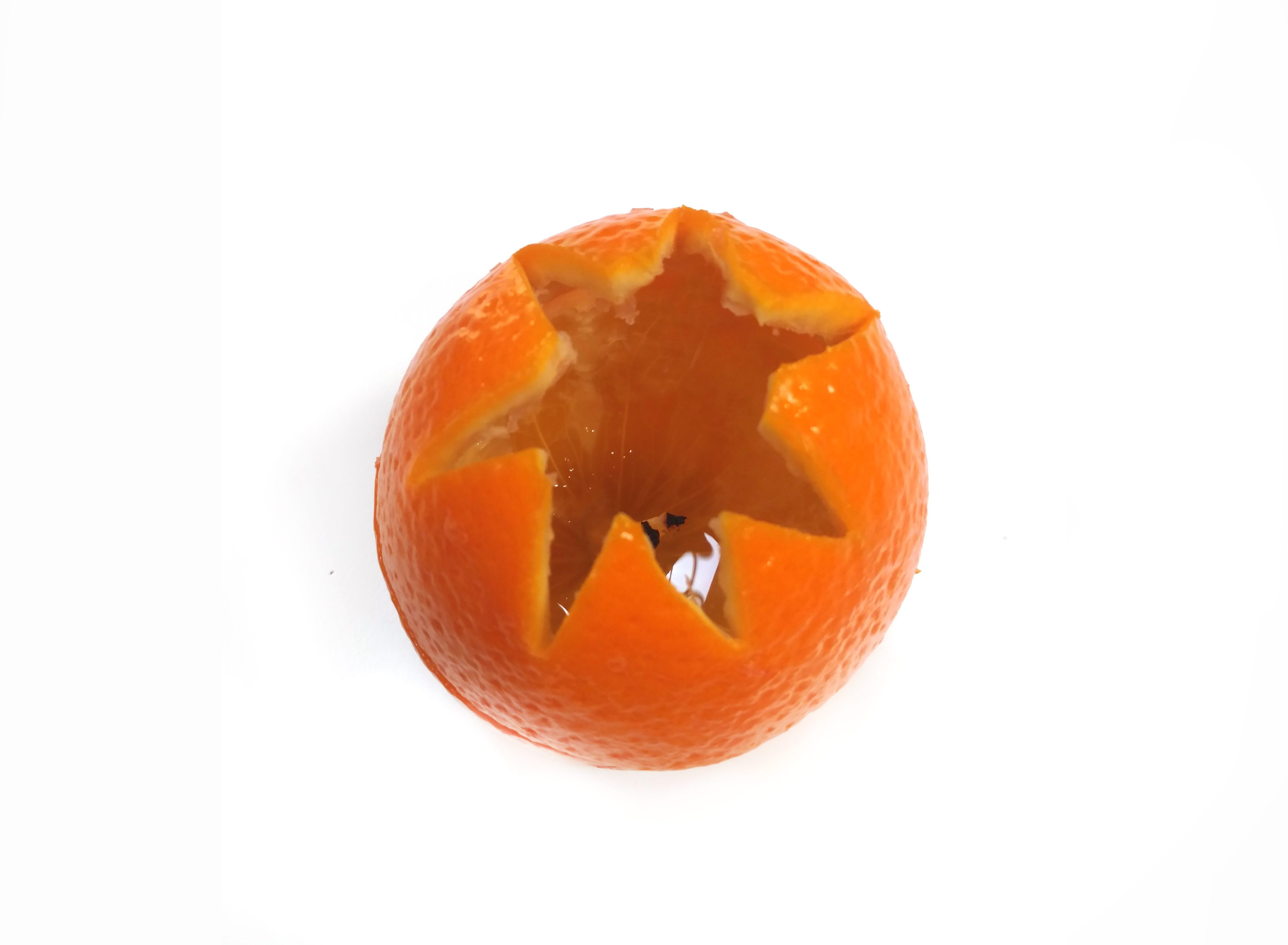
Learn more
What's going on?
Candle wicks are designed to do two things: burn very slowly, and draw up fuel (either wax, or, in this case, vegetable oil) to slowly feed the flame. In the case of your orange candle, the dry pith burns slowly at its top, and heats up oil below it. The now-heated oil flows up the pith via capillary action and keeps the flame going. Because the pith burns so slowly, your orange candle should stay lit for many hours.
To experiment with the more combustible side of oranges, save a bit of your extra orange peel, and after you've lit your orange candle, carefully spray some orange zest through the flame (keeping your face and hands away from it). You should be able to see a small but exciting explosion - that's the orange's flammable limonene in action.
